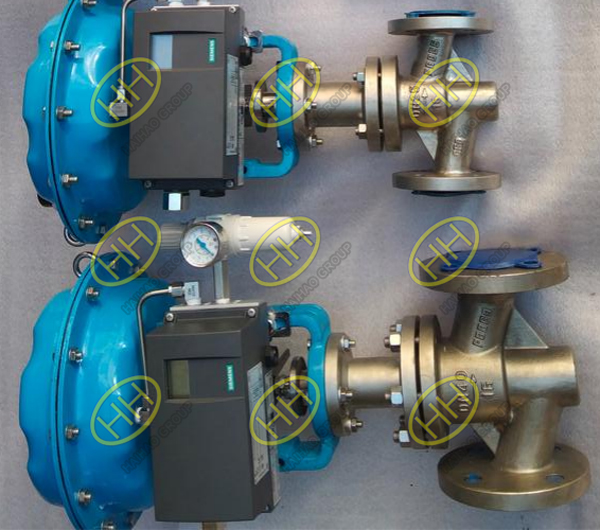Common issues and insights about control valves
Control valves play a critical role in regulating flow, pressure, and other variables in piping systems. However, certain types of control valves have inherent design characteristics that can lead to operational challenges. This article explores six common issues associated with control valves and provides professional insights for proper selection and application.
1.Why Do Double-Seat Control Valves Vibrate at Small Openings?
Double-seat control valves are prone to instability when operating at small openings. This is mainly due to their internal structure. A double-seat valve has two plugs: the upper plug is in a flow-to-open position, while the lower one is in a flow-to-close position. The valve operates more stably when the plug is in the flow-to-open state. However, at small openings, especially when close to the flow-to-close position, oscillation can easily occur.
Recommendation: Avoid using double-seat control valves in applications that require stable operation at low opening percentages.
2.Can Double-Seat Valves Be Used for Tight Shut-Off?
Despite their balanced design that allows high differential pressure, double-seat valves are not suitable as shut-off valves. The reason lies in their dual-seat structure—it’s difficult for both seats to seal perfectly at the same time, resulting in a relatively high leakage rate. Even though modern versions have improved with sleeve designs, the fundamental limitation remains.
Conclusion: Double-seat valves are ideal for flow regulation, but not recommended for applications requiring zero leakage shut-off.
3.Plugging Resistance: Linear Stroke vs. Rotary Valves
Linear stroke control valves feature vertically moving plugs, while fluid flows horizontally through an S-shaped flow path inside the valve body. This creates dead zones where sediment can accumulate, increasing the risk of blockage over time.
In contrast, rotary valves have horizontally rotating plugs, which align with the flow direction, resulting in fewer dead zones. Sediments are more easily carried away by the medium, improving self-cleaning performance.
Result: Rotary valves are significantly better in terms of anti-blocking performance compared to linear stroke valves.
4.Why Are Linear Stroke Valve Stems Designed Thin?
Linear stroke valve stems move vertically and experience sliding friction, which is significantly higher than rolling friction. To reduce friction, stems are designed thinner, and low-friction PTFE packing is used. However, thinner stems are more prone to bending, and the packing tends to have shorter service life.
Trade-Off: While thin stems reduce friction for smoother actuation, they may compromise durability under certain conditions.
5.Why Do Rotary Valves Withstand Higher Shut-Off Pressure Differentials?
Rotary valves produce a very small torque on the valve shaft due to the balanced force from the fluid acting on the plug. This structural advantage allows them to withstand higher pressure differentials during shut-off, making them well-suited for demanding shut-off applications.
6.Why Are Hard-Seated Valves Preferred for Shut-Off Applications?
While soft-seated valves often offer better initial sealing performance, they lack durability and wear resistance. In contrast, hard-seated valves, especially those with welded wear-resistant alloys, provide better reliability and long-term leak tightness.
Best Practice: For shut-off applications that require both low leakage and long-term reliability, hard-seated valves are the better choice.
Understanding the characteristics and limitations of different control valve types is essential for proper selection and reliable operation. At Haihao Group, we provide professional valve solutions tailored to your application, whether you require precise flow control, tight shut-off, or anti-blocking performance. Contact us to learn more about our valve portfolio and technical support services. Email:sales@haihaogroup.com
Related articles:
Knowing these tips to extend the life of your control valve by two years
Troubleshooting Common Control Valve Issues

